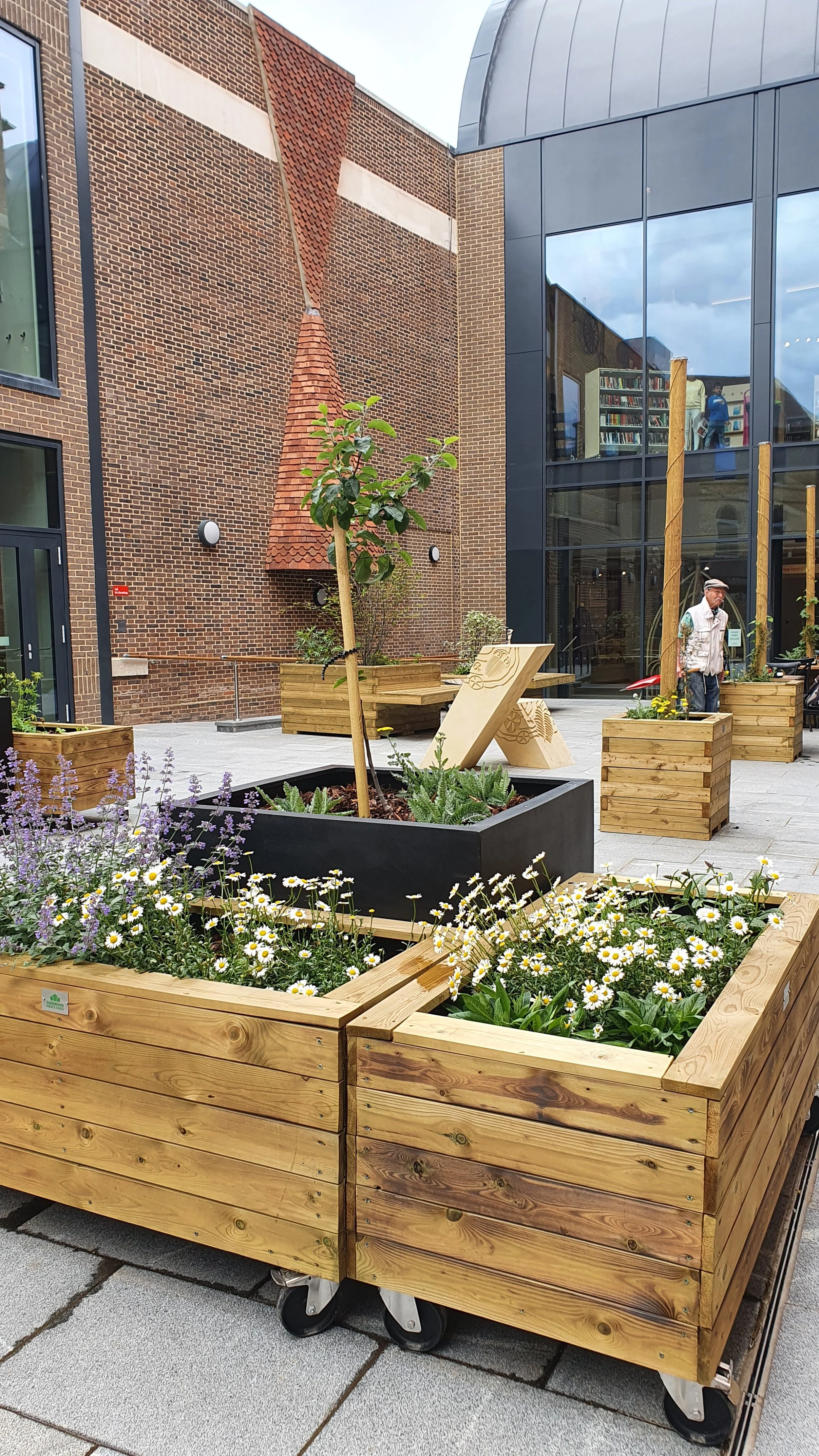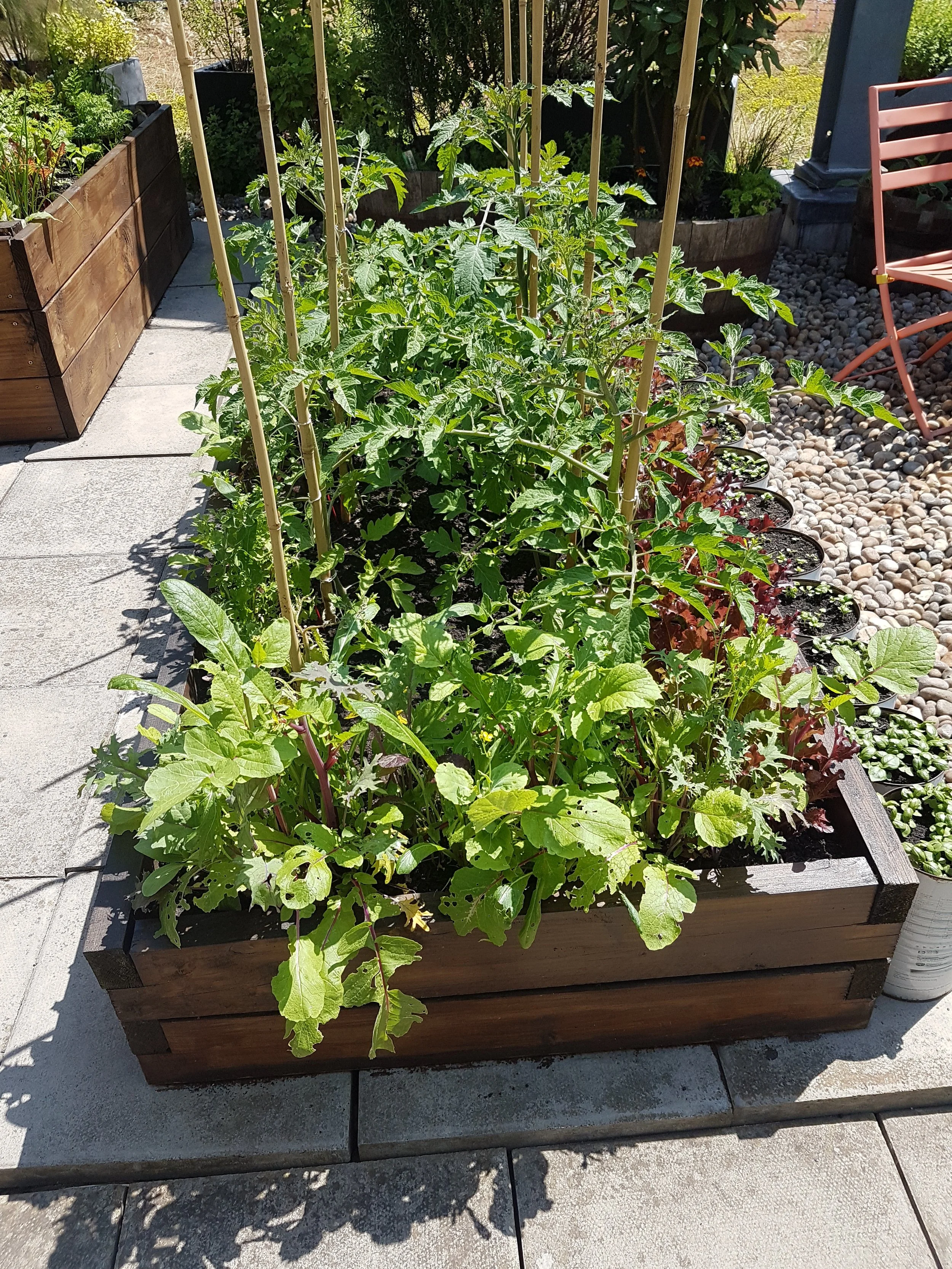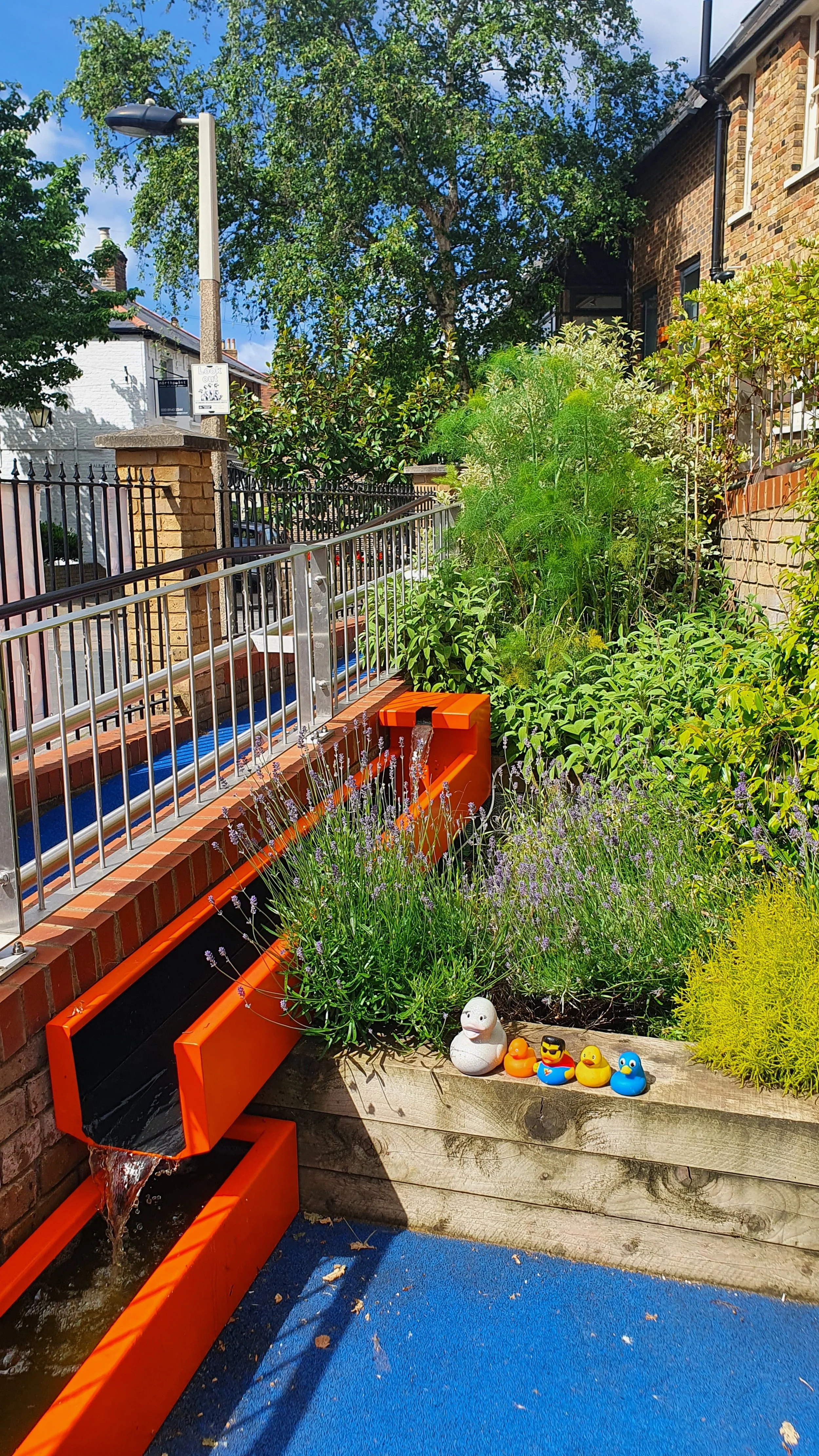The Workplace Garden
Creating uplifting everyday outdoor escapes for the workplace
Can workplace gardens increase the attraction of the office post pandemic?
Post pandemic there’s been a lot of talk about hybrid working and the future of the workplace. During lockdowns, those fortunate enough to have their own gardens found that they were using them more, if only to socialise outside, but for many they also became places to grow food and places of beauty to relax. In good weather some even worked outside. It has been cheekily suggested in the press there’s even a section of the population that enjoyed their gardens rather too much and are now not keen to return to the workplace, forming part of the economically inactive sector. Of course, not everyone was in that situation. Unsurprisingly, those in flat shares or in small homes with young children still found it beneficial to be in the workplace as soon as they were given the option.
So now here we are in the ‘new normal’ where many office workers now only come in Tuesday to Thursday and work at home on the other days. For those that come into the office more often due to less than ideal working environments at home, and to tempt those more experienced workers back, could we provide some benefits to the work environment that replicate the home environment that some found so attractive? Well, perhaps by providing workplace gardens we can start.
I’ve been fortunate to have designed a garden for a charity, a public garden for an arts institution and a garden around a professional body’s headquarters. Although they are all different sectors there are some commonalities, not least of which that they are all workplaces. So, are there some briefing elements that can be extracted as being likely to apply to future projects? Certainly, since those workplaces that put the wellbeing of their staff and visitors to the forefront while reducing carbon and increasing biodiversity will be the future. Particularly in light of the UK’s push towards carbon net zero and bearing in mind recent legislation for new developments to have a biodiversity net gain, garden design provides the opportunity to respond to all of these requirements.
Gardens and Carbon Reduction
Casting our minds back to school biology we might all remember that plants and trees capture carbon dioxide from the atmosphere during photosynthesis and then release oxygen. What is lesser known is that healthy soil becomes a giant carbon store. This is explained well in Isabella Tree’s book ‘Wilding’ – ‘in France a ‘4 per 1000’ initiative is based on the fact that the quantity of carbon contained in the atmosphere increases by 4.3 billion tonnes every year. The world’s soils contain 1,500 billion tonnes of carbon in the form of organic material. Increasing the quantity of carbon contained in soils by just 0.4 % a year, through restoring and improving degraded land, would halt the annual increase of CO2 in the atmosphere.’ Here in the UK, The Land Gardeners are passionate advocates of soil health and have a useful section with links to other associations on their website:
https://www.thelandgardeners.com/articles-links
By carefully considering the soil, the planting and the permeability of the hard surfaces we can create the carbon stores of tomorrow in the soil as well as of course planting, especially trees, to capture carbon as well.
Entrance planting at Lutyens House will introduce trees, shrubs and mixed perennials to replace blocky evergreen shrubs and lawn
Gardens and Biodiversity
Again, it’s perhaps easy to understand how gardens increase biodiversity. Increasing sources of nectar for pollinators, providing less tidy areas to attract other invertebrates and ceasing any use of pesticides are easy ways to do so. The woodland trust has a clear page explaining the basics of these ideas:
https://www.woodlandtrust.org.uk/blog/2023/04/increase-garden-biodiversity/
However, a garden needn’t be wild or unkempt looking or preclude non native plants. A recent study at perhaps one of the most famous ornamental gardens in the UK, Great Dixter, showed that the ornamental garden was in fact the most valuable section of the greater garden in terms of biodiversity, explained clearly in this article by the head gardener Fergus Garrett:
https://www.gardensillustrated.com/feature/great-dixter-astounded-ecologists/
CRGD design for The Amelia Courtyard, Tunbridge Wells, with apple trees, hops, ornamental and edible planting as well as woodland style planting attracting a diverse array of insects
Gardens and Wellbeing
And now to my favourite topic since gardens are fundamentally places for people – indeed we can think of them as our own human habitats. Wellbeing feels as though it should be a more nebulous issue but thanks to Sue Stuart-Smith’s fantastic book ‘The Well Gardened Mind’ and a recent study by the RHS showing how the presence of just a few plants in front gardens can reduce cortisol levels (https://www.rhs.org.uk/advice/health-and-wellbeing/articles/greener-gardens-promote-healthier-residents) we now have a catalogued and scientific understanding of the ways in which gardens can improve our wellbeing. As well as providing obvious spaces for relaxation, one of the benefits of gardens is improving our connections to the seasons through planting which highlights those changes rather than remaining static and unchanging. The cycle of the seasons provides a connection with the cycle of death and renewal, which is in turn helpful in providing a sense of hope and optimism. Another benefit is encouraging staff outside into the daylight, which improves circadian rhythms and therefore sleep. Gardens can also provide venues for outdoor working and walking meetings, so increasing the opportunity to ‘snack’ on exercise rather than staying desk bound. A more unusual workplace idea could also be to provide gardening opportunities for staff. This in turn provides a wealth of benefits by creating an opportunity to nurture, to experience flow, to exercise outdoors and to gain beneficial microbes by getting hands in soil. On a London Square Open Gardens visit a few years ago I visited Eversheds Sutherland Vegetable Garden and it was amazing to hear how some enthusiastic staff were using their lunch hours or coming in early to tend these vegetable beds.
Eversheds Sutherland Rooftop Vegetable Garden
Last but not least a good garden must be beautiful. The requirement for beauty in our lives is underestimated and is in fact, not superficial but essential to our sense of wellbeing. Again, from ‘The Well Gardened Mind’ we hear of the work of Semir Zuki, proifessor of neuroaesthetics at University College London, who has shown that ‘the experience of beauty is consistently accompanied by a unique pattern of neural activation on brain scans….within brain regions that are part of our pleasure and reward pathways….they are associated with our dopamine, serotonin and endogenous opoid systems and damp down our fear and stress responses. Hence beauty calms and revitalises us at the same time’
CRGD design for Small Steps entrance planting with uplifting colours and scents and a bespoke water feature providing a soothing welcome.
With so many benefits, how better to show your commitment to the wellbeing of your staff and to the wellbeing of the planet by creating a workplace garden.
Whether you have a small courtyard space, a roof terrace or acres surrounding your headquarters, if you are an enterprise who would like to create an uplifting everyday outdoor escape for your staff, I’d be really pleased to discuss your project with you.




